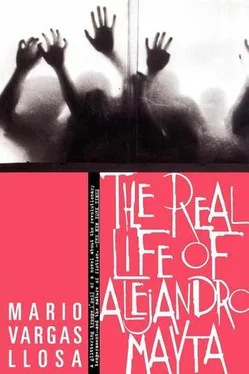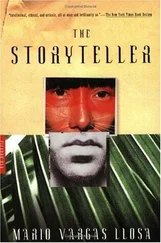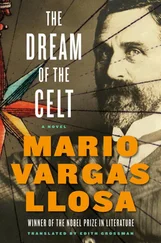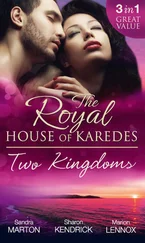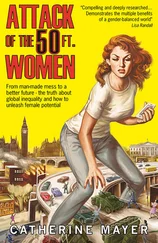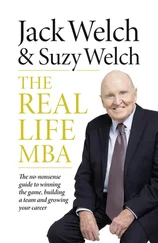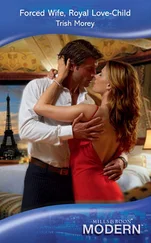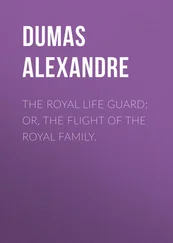Mario Llosa - The Real Life of Alejandro Mayta
Здесь есть возможность читать онлайн «Mario Llosa - The Real Life of Alejandro Mayta» весь текст электронной книги совершенно бесплатно (целиком полную версию без сокращений). В некоторых случаях можно слушать аудио, скачать через торрент в формате fb2 и присутствует краткое содержание. Год выпуска: 1998, Издательство: Farrar, Straus and Giroux, Жанр: Современная проза, на английском языке. Описание произведения, (предисловие) а так же отзывы посетителей доступны на портале библиотеки ЛибКат.
- Название:The Real Life of Alejandro Mayta
- Автор:
- Издательство:Farrar, Straus and Giroux
- Жанр:
- Год:1998
- ISBN:нет данных
- Рейтинг книги:4 / 5. Голосов: 1
-
Избранное:Добавить в избранное
- Отзывы:
-
Ваша оценка:
- 80
- 1
- 2
- 3
- 4
- 5
The Real Life of Alejandro Mayta: краткое содержание, описание и аннотация
Предлагаем к чтению аннотацию, описание, краткое содержание или предисловие (зависит от того, что написал сам автор книги «The Real Life of Alejandro Mayta»). Если вы не нашли необходимую информацию о книге — напишите в комментариях, мы постараемся отыскать её.
The Real Life of Alejandro Mayta — читать онлайн бесплатно полную книгу (весь текст) целиком
Ниже представлен текст книги, разбитый по страницам. Система сохранения места последней прочитанной страницы, позволяет с удобством читать онлайн бесплатно книгу «The Real Life of Alejandro Mayta», без необходимости каждый раз заново искать на чём Вы остановились. Поставьте закладку, и сможете в любой момент перейти на страницу, на которой закончили чтение.
Интервал:
Закладка:
“Of course,” he says, as if he were spelling it out, scrutinizing me with doubt, deciphering me bit by bit.
“I’d like to talk with you,” I add. “Ask you a few questions, clear up a couple of points. Only what you want to tell me or feel you can tell me, naturally. I’ve got a lot of puzzles bouncing around in my head. Besides, this conversation is my final chapter. You can’t refuse me now, it would be like taking a cake out of the oven too soon — the novel would fall apart.”
I laugh, and so does he, and we hear the three boys laughing. But they’re laughing at a joke one of them has just told. And then a woman comes in and asks for a quart, half pistachio and half chocolate. After handing her the ice cream, Mayta comes back to me.
“Two or three years ago, some of the guys from Revolutionary Vanguard came to see me in Lurigancho,” he says. “They wanted to know all about Jauja, a written account. But I wouldn’t do it.”
“I don’t want anything like that,” I say. “My interest isn’t political but literary, that is …”
“Yes, I see,” he interrupts me, raising a hand. “Okay, I’ll give you one evening. No more, because I don’t have much time, and, to tell you the truth, I don’t like talking about that stuff. How about next Tuesday? It’s better for me, because on Wednesday I don’t start here until eleven, so I can stay up late the night before. All the other days, I have to leave home at six, because I have to take three buses to get here.”
We agree that I’ll pick him up when he finishes work, after eight. Just as I’m leaving, he calls me back. “Have an ice-cream cone, on the house. So you see how good our ice cream is. Maybe you’ll become a regular customer.”
Before I go back to Barranco, I take a little walk around the neighborhood, mentally trying to put things in their proper order. I stop for a while under the balconies of the house where that superlative beauty Flora Flores lived. She had long, chestnut-colored hair, slender legs, and violet eyes. Whenever she came to the rocky beach at Miraflores, wearing her black bathing suit, the morning would fill with light, the sun would glow hotter, the waves roll more joyously. I remember that she married a pilot and only a few months later he crashed into a peak in the Cordillera, between Lima and Tingo María. Years later, someone told me that Flora had remarried and was living in Miami. I go up to Avenida Grau. Right on this corner, there was a gang of boys with whom we — the Diego Ferré and Colón boys, from the other end of Miraflores — would have hard-fought soccer matches at the Terrazas Club. I remember how anxiously I’d wait for those matches when I was a kid, and how terribly frustrating it was when I was only on the second team. When I get back to the car, half an hour later, I’ve partially recovered from my meeting with Mayta.
The incident that caused him to be sent back to Lurigancho, the reason he spent the past ten years there, is well documented in newspapers and judicial archives. It occurred in Magdalena Vieja, not far from the Anthropological Museum, at sunrise one January day in 1973. The president of the Pueblo Libre branch of the Banco de Crédito was watering his patio — he did it every morning before getting dressed — when the doorbell rang. He thought it was the milkman, coming by earlier than usual. At the door there were four men, their faces covered with ski masks and their pistols pointing straight at him. They went with him to his wife’s room. They tied her up in her own bed. Then — they seemed to know the place well — they went into his only daughter’s bedroom. (She was nineteen years old, studying to become a travel agent.) They waited until the girl got dressed and told the gentleman that, if he wanted to see her again, he should pack fifty million soles into an attaché case and bring it to Los Garifos Park, near the National Stadium. They disappeared with the girl in a taxi they’d stolen the night before.
Mr. Fuentes reported everything to the police and, following their instructions, carried an attaché case stuffed with paper to the Los Garifos Park. There were plainclothesmen stationed all around it. No one approached him, and Mr. Fuentes received no communication for three days. Just when he and his wife were getting desperate, there was a second telephone call: the kidnappers knew that he had called the police. They would, however, give him one last chance. He was to bring the money to a corner of Avenida Aviación. Mr. Fuentes explained that he couldn’t get fifty million soles , that the bank would never give him that kind of money, but he would give them his life savings, some five million. The kidnappers insisted: fifty million or they’d kill her.
Mr. Fuentes helped himself to some money, signed notes, and succeeded in getting together nine million, which he brought that night to the place the kidnappers had indicated — this time, without telling the police. A car skidded to a halt, and the person on the passenger side grabbed the attaché case, without saying a word. The girl turned up some hours later at her parents’ home. She had taken a taxi at Avenida Colonial, where her captors had left her. They’d held her for three days, blindfolded and partially chloroformed. She was so distraught that she had to be taken to the Hospital del Empleado. A few days later, she walked out of the room she was sharing with a woman just operated on for appendicitis, and, without saying a word, jumped out of a window.
The newspapers sensationalized the girl’s suicide and fanned public opinion. A few days later, the police announced that they had captured the head of the group — Mayta — and that his accomplices would be captured momentarily. According to the police, Mayta admitted his guilt and gave all the details. His accomplices and the money vanished. At the trial, Mayta denied he had ever taken part in the kidnapping, denied he had even known about it, and insisted that he was tortured into making a false confession.
The trial lasted several months, and at the outset it got a lot of attention in the papers. But that quickly faded. Mayta was sentenced to fifteen years: the court found him guilty of kidnapping, criminal extortion, and complicity in a homicide. He swore he was innocent. That on the day of the kidnapping he was in Pacasmayo looking into a possible job, as he said again and again, but he could provide no witnesses, no proof. The testimony of Mr. and Mrs. Fuentes was especially damning. Both were sure that Mayta’s voice and physical appearance were those of one of the men in ski masks. Mayta’s lawyer, an obscure shyster whose performance during the entire trial was awkward and halting, appealed. The Supreme Court upheld the original sentence two years later. The fact that Mayta was set free after serving two-thirds of his time certainly corroborates what Mr. Carrillo told me at Lurigancho: that his behavior during those years was exemplary.
On Tuesday, at 8 p.m., when I drive over to pick him up at the ice-cream parlor, Mayta is waiting for me, carrying an airline bag, which probably contains the clothing he wears at work. He’s just washed his face and combed that wild hair of his; a few drops of water run down his neck. He’s wearing a blue striped shirt, a faded, much darned checked jacket, wrinkled khaki trousers, and heavy shoes, the kind used for hiking. Is he hungry? Shall we go to a restaurant? He says he never eats at night and that it would be better if we were just to look for a quiet place. A few minutes later, we’re in my study, face to face, drinking soda. He doesn’t want beer or anything alcoholic. He tells me he gave up smoking and drinking years ago.
The beginning of the chat is rather sad. I ask him about the Salesian School. He did study there, correct? Yes. He hasn’t seen any of his schoolmates for ages, and knows only the slightest bit about a few of them, professional men, businessmen, or politicians — the ones whose names appear in the papers. And nothing about the priests, although, he tells me, just a few days ago he ran into Father Luis on the street. The one who taught the youngest students. A little old man, almost blind, bent over, dragging his feet, propelling himself along with a broomstick. He told Mayta that he was in the habit of taking his little strolls on Avenida Brazil, and that he had recognized him, but Mayta smiles; of course he had no idea to whom he was speaking. He must be a hundred years old.
Читать дальшеИнтервал:
Закладка:
Похожие книги на «The Real Life of Alejandro Mayta»
Представляем Вашему вниманию похожие книги на «The Real Life of Alejandro Mayta» списком для выбора. Мы отобрали схожую по названию и смыслу литературу в надежде предоставить читателям больше вариантов отыскать новые, интересные, ещё непрочитанные произведения.
Обсуждение, отзывы о книге «The Real Life of Alejandro Mayta» и просто собственные мнения читателей. Оставьте ваши комментарии, напишите, что Вы думаете о произведении, его смысле или главных героях. Укажите что конкретно понравилось, а что нет, и почему Вы так считаете.
